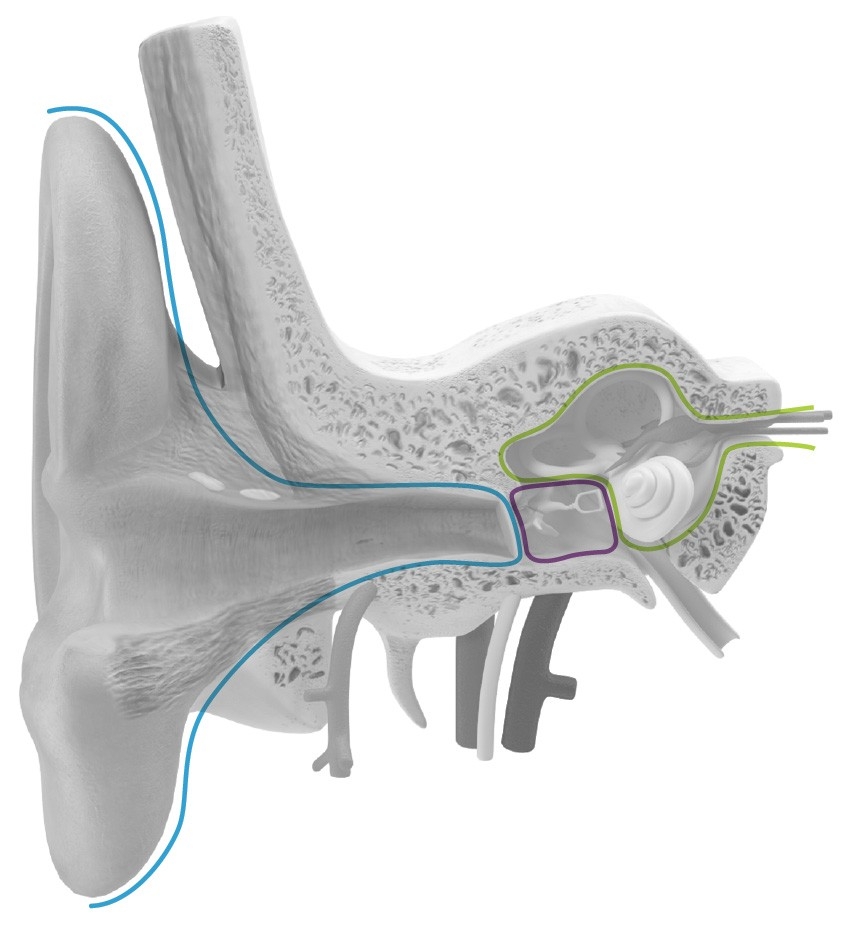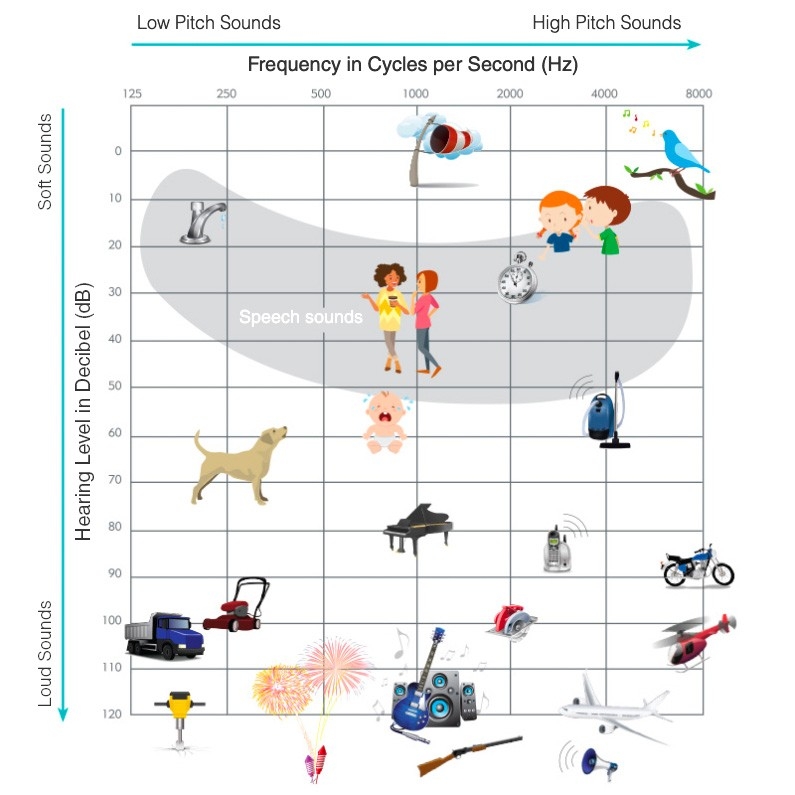
Hearing loss overview.
The ability to hear is a complex process that relies on several areas of the ear and the brain to work together in harmony.
The ear is responsible for collecting sounds and transmitting them to the brain for interpretation. This process involves three separate areas of the ear: the outer, middle, and inner ear. Each and every sound a child hears can be described in four dimensions: loudness, pitch, direction, and time (changes in the previous three dimensions from moment to moment).
Hearing loss occurs when there is abnormality or damage to any of these parts which affects the four dimensions. An audiologist will help identify the problem and will begin by conducting a hearing test.
How is the ear structured?
The structure of your child’s ear is fully formed at birth and consists of three sections; each plays an important role in hearing.

OUTER EAR acts as a funnel to collect sound vibrations and conduct them towards the eardrum.
MIDDLE EAR amplifies the sound vibrations and conducts them to the inner ear.
INNER EAR contains the cochlea with sensory cells that convert sound vibrations into neural impulses that travel up the auditory nerve.
Understanding the audiogram.
An audiogram is a graphical representation of your child’s hearing ability. A child with mild-to-moderate hearing loss (20 –70 dB) may experience difficulty hearing and understanding soft speech, speech from a distance, or even regular speech at close distances. Those who are diagnosed with severe-to-profound hearing loss (70 – 90+ dB) may only hear loud noises or perceive certain loud noises as vibrations.
Your hearing care professional will determine the best options for your child based on where the results of your child’s hearing test fall on the audiogram.

Understanding Your Child’s Hearing Loss
Every child is unique. And hearing loss can affect them in different ways. Four key factors—age, degree, intervention, and support—can determine what impact hearing loss might have on their lives.

AGE
A child’s first years are the most important for speech and language development. So the impact of hearing loss is greatest in those who are born with or develop hearing loss soon after birth.

DEGREE
The degree of hearing loss may range from mild to profound. The greater the severity, the greater the impact.

INTERVENTION
The sooner a child is identified with hearing loss, and the earlier they receive support services, the greater the opportunity for learning spoken language.

SUPPORT
Children with hearing loss who receive timely and appropriate treatment and intervention can grow and develop like others with normal hearing.

Managing Hearing Loss
Once your child has been diagnosed with hearing loss, it’s important to address it as soon as possible. The goal is to minimise developmental delays and facilitate communication, education, emotional, and social development.
For those children who develop hearing loss at a later age, hearing screenings and tests can effectively identify hearing loss soon after its onset, allowing for intervention and, similarly, limiting its impact.
Understanding your options & technologies.
After identifying your child’s hearing loss, you will be introduced to an expert team who will answer all your questions and assist you in the process of deciding which management option is best for your child.
While hearing aids are usually a great solution for children with mild-to-moderate hearing loss, cochlear implants are the leading option for those with severe-to-profound hearing loss.2 Typically, children who show signs of hearing loss will be fitted with hearing aids first.
Your team of hearing care professionals will keep a close eye on how your child performs with these hearing aids, and will determine if they are a candidate for a CI.
How to hear better in challenging environments.
Hearing with two ears dramatically helps children with spatial orientation, making it easier to sense which direction sounds—such as the beep of an oncoming car or a friend calling out on the playground—are coming from. Two-ear hearing also helps children hear speech better in noisy situations, like during playtime or lunch in the cafeteria.
It’s for this reason that the most complete hearing solutions enable the use of both ears. This could be cochlear implants on both ears or an implant on one ear and a compatible hearing aid on the other. With Phonak and Advanced Bionics, you’ll benefit from technology that goes beyond other options. The integrated technologies in our hearing devices “talk“ to each other via a wireless signal that ensures your child is hearing as much of their environment as possible.
LET'S TALK
NEXT SECTION
REFERENCES
World Health Organization, Child Hearing Loss. Act Now, Here’s How! https://www.who.int/pbd/deafness/world-hearingday/WHD2016_Brochure_EN_2.pdf
Eddins, David A. “Sandlin´s Textbook of Hearing Aid Amplification.”(2014):p.660
Did you know?
Research shows that children who are born deaf or acquire hearing loss very early in life—and who receive appropriate interventions within six months of age—are at par with their hearing peers in terms of language development by the time they are 5 years old.1


